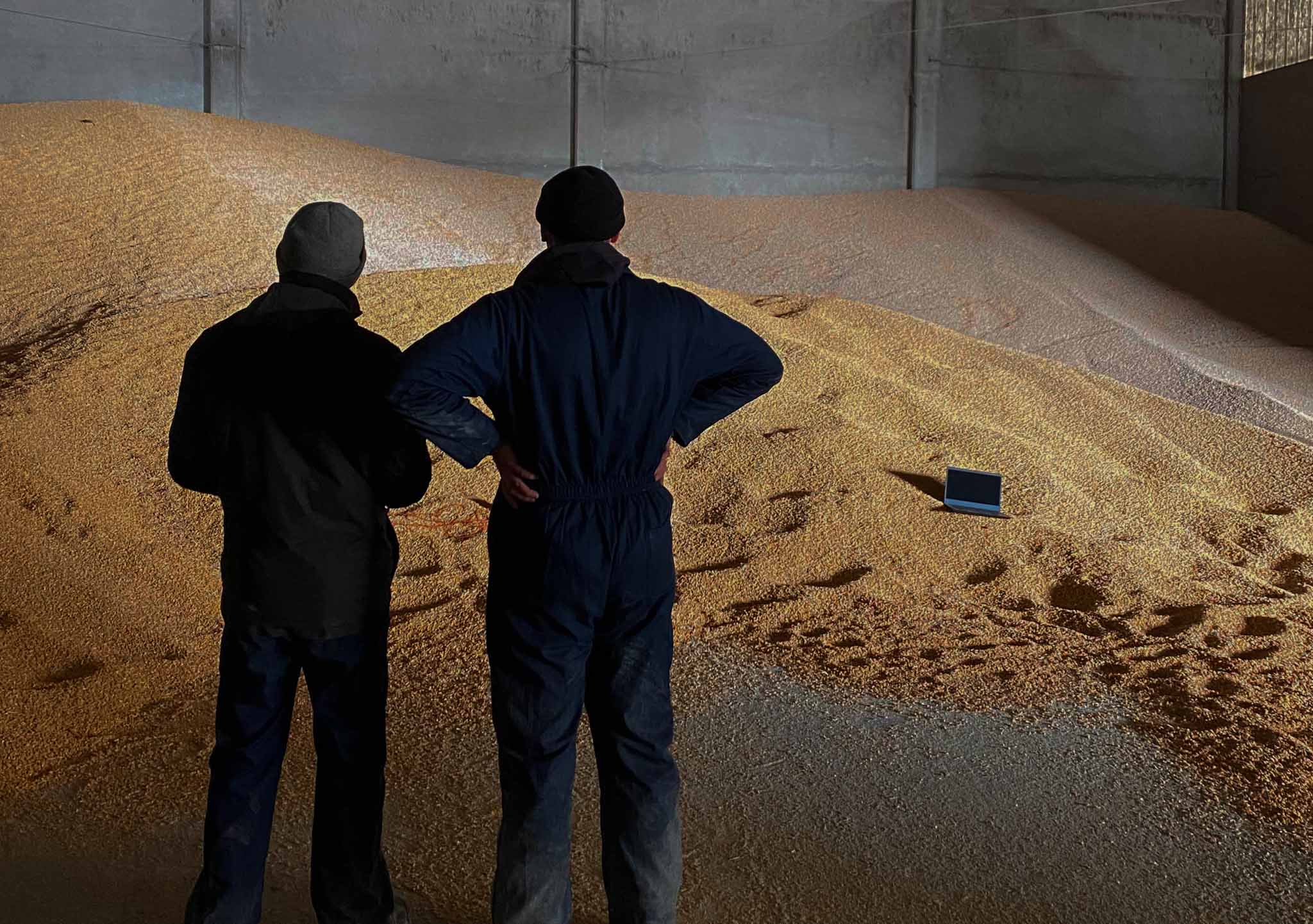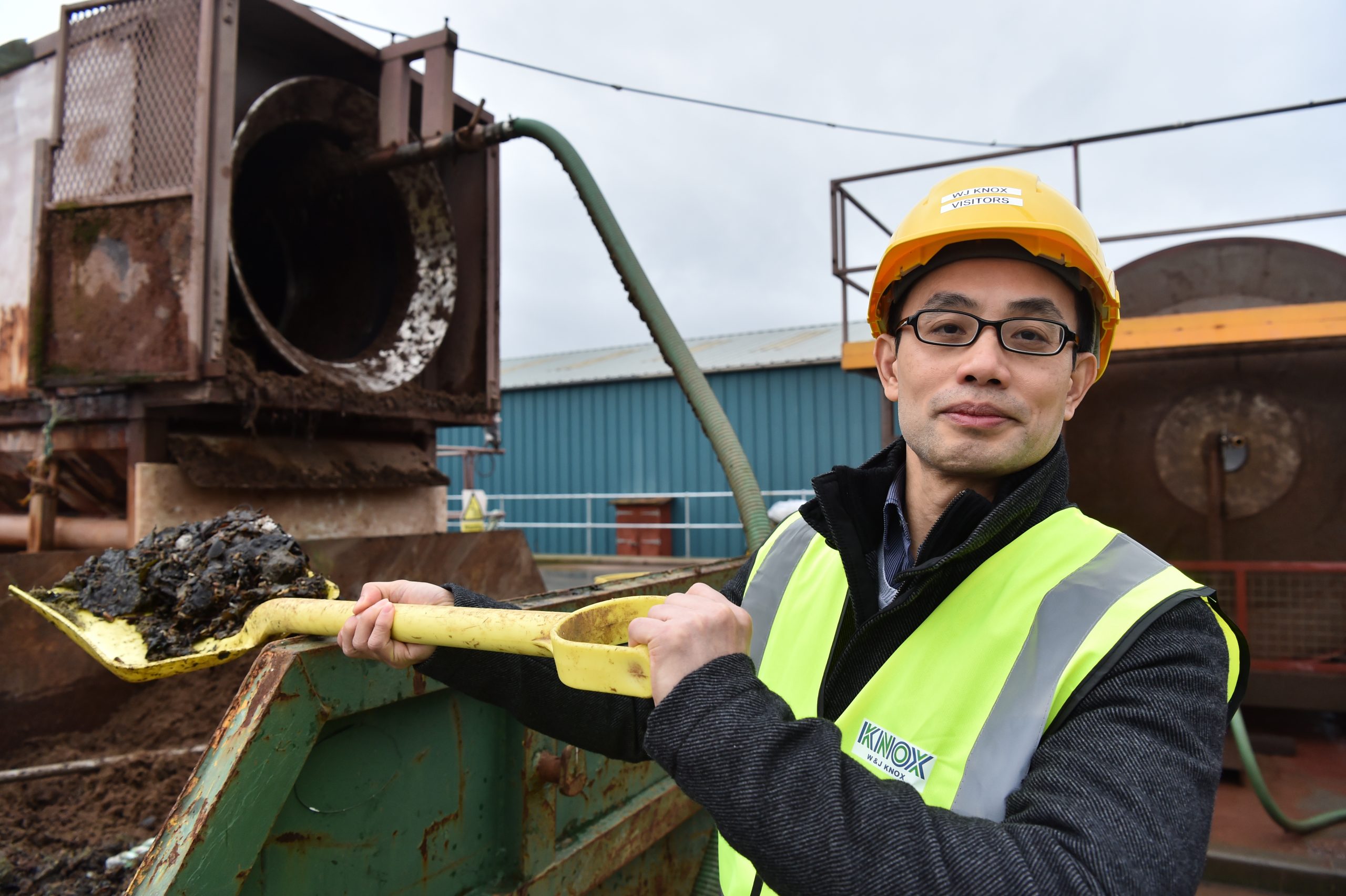Case Study
Crover Ltd

Key Highlights
- Crover Ltd has developed the world’s first robotic device that can monitor the condition of grains, such as wheat and barley, that are stored in sheds and silos for long periods of time.
- This break-through technology is revolutionizing the agri-food sector helping identify early onset of spoilage from infestation by insects and moulds, thus reducing food waste, improving grain management, and saving money.
- In the last three years since inception, Crover Ltd has grown from 2 employees to over 20 employees, has raised significant investment and secured over £600K in innovation prizes and funding.
- Interface has connected Crover Ltd to a wide range of Scottish academic partners to support their business growth, various projects include:
- Quantifying monetary benefit through risk reduction for users’ insurance premiums
- Enhancing product design through investigating; cable suspension design, water-proofing design, design of a remote charging station and investigating manufacturing improvements of the CROVER
- Enhancing product capabilities through improved accuracy of device location and detection
Partners
Glasgow Caledonian University
Heriot-Watt University
University of Glasgow
University of Strathclyde
Sectors
Food & Drink, Agritech and Aquaculture
Regions
Edinburgh & Lothians
The Crover – the world’s first robotic device that ‘swims’ through grains to monitor their condition.
Background
Crover Ltd https://www.crover.tech has developed the world’s first small robotic device, known as a ‘CROVER’, that monitors cereal grains stored in bulk inside grain bins or storage sheds. The CROVER device can “swim” within the grains and uses on-board sensors to measure local parameters, such as temperature and moisture, to build a full map of the conditions within the grains. Unlike current grain monitoring solutions that measure only one variable and have limited reach, the CROVER’s remote monitoring capabilities provide real-time data across a range of measurements allowing grain storekeepers to identify critical conditions, like hotspots early and maintain quality of the grains through proactive management.
Crover Ltd were a start-up when they initially approached Interface in 2019, they have since grown from two co-founders to 20 employees.
Since 2019 they have secured significant investment, raising over £600k in innovation prizes and grants (including Scottish Enterprise and Innovate UK). They then opened a seed funding round for investors and hit their £150k target.
The Challenges / Solutions
“When we initially met Interface, we didn’t have a specific R&D challenge as we were focused on developing our product inhouse. An obvious area for support would have been in the areas of design and engineering, however, through discussions with Louise, she assessed how our business worked and proposed that we undertake a project with the Scottish Financial Risk Academy (SFRA). The project with the SFRA helped us determine precise financial estimates of the value of Crover data to grain storekeepers and its impact on the grain storage economics. Understanding the financial impacts of Crover’s monitoring capabilities, had wider implications such as being able to quantify monetary value to grain insurers, and the potential to reduce insurance premiums for farmers and grain merchants.” Lorenzo Conti, Co-founder Crover Ltd
Following on from this initial project, one of the main technical challenges Crover Ltd faced related to the precise location tracking of the device within the grain bulk. Conventional signals, such as GPS and WiFi, did not work due to their inability to penetrate the solid grain bulk so a novel approach was required. Crover Ltd had undertaken some initial testing of different solutions, however they needed to tap into academic expertise in ultrasonic waves, positioning systems, electromagnetic signals, wireless sensor network (WSN) and Simultaneous Localization and Mapping (SLAM), to help improve the accuracy of the device location. Interface connected them to the University of Glasgow who undertook an initial feasibility into a means of measuring and identifying the location of the robotic device in bulk grain storage. This was initially funded by an Impact Accelerator Account fund of £10k, which then led onto a further project where University of Glasgow and Crover Ltd secured a further £27K to continue the project to a successful conclusion.
Since the initial collaboration Interface has assisted Crover Ltd embark on several other successful collaborations focusing more on the future enhancement and performance improvement of the robotic device, by tapping into design and engineering expertise from several Scottish Academic Institutions. These involved:
- Heriot-Watt University (HWU) design engineering students looking at designs for a remote charging station for the Crover to allow re-charging when out on location.
- HWU design engineering students helping to develop an easily deployable, suspended cable system that provides cable above the Crover to facilitate its movement within grain sheds.
- University of Strathclyde’s design engineering students designing a water-tight sealing system for the Crover.
- University of Strathclyde’s Department of Design, Manufacturing and Engineering Management (DMEM), investigating suitability of design for manufacture.
The Benefits
The benefits resulting from the numerous collaborations which Interface have helped broker have undoubtedly helped Crover Ltd in both product development and business growth terms. Interface has helped open doors for Crover Ltd and helped Lorenzo and his team to establish strong links with academia resulting in some innovative and exciting developments.
Since its inception in 2019 Crover Ltd has grown from 2 employees to over 20 employees, has raised significant investment and secured over £600K in innovation prizes and funding.


